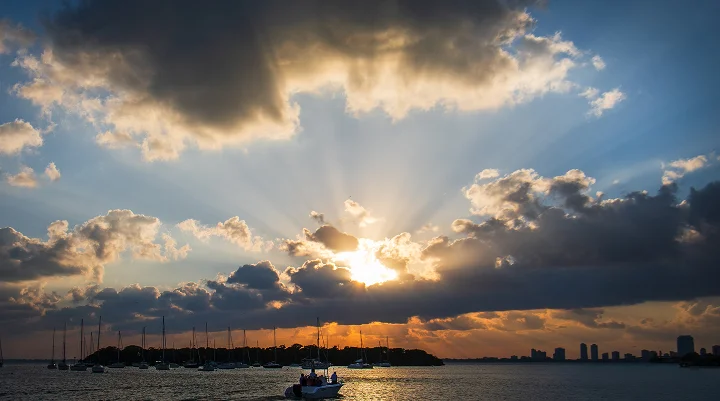
Homeowners Insurance Quotes in Miami, FL
What You Should Know About Home Insurance in Miami
Miami is a vibrant, diverse city known for its sunny weather, beautiful beaches, and bustling cultural scene. From the trendy streets of South Beach to the laid-back charm of Coconut Grove, Miami offers something for everyone. The city is divided into distinct neighborhoods, each with its own unique vibe. Downtown Miami is a hub for business and nightlife, while Coral Gables boasts tree-lined streets and Mediterranean-style architecture. Wynwood is famous for its street art and creative energy, and Little Havana brings the flavor of Cuban culture to the city.
People move to Miami for its mix of work opportunities, year-round warmth, and thriving social scene. The city attracts young professionals, artists, retirees, and people seeking a lifestyle full of diversity, culture, and outdoor activities. It’s also a hotspot for international buyers, drawn by its location and global appeal.
Given Miami’s proximity to the coast, homeowners insurance is especially important. With the risk of hurricanes, high winds, and flooding, it’s essential to have comprehensive coverage that protects against these potential hazards. InsureOne provides tailored Florida home insurance solutions, ensuring homeowners have the right coverage for their unique needs, including protection from hurricanes, high winds, and flooding.
How Much Does a Homeowners Insurance Policy Typically Cost in Miami?
Home insurance rates are based on local labor and material costs for replacement. For a breakdown of the average costs across different property types, refer to the table below.
| Dwelling Insurance Total | Average Annual Cost in Miami | Average Annual Cost Nationwide |
|---|---|---|
| Homes $300K | $4,688 | $2,582 |
| Homes $600K | $8,976 | $4,140 |
| High-end Homes | $14,685 | $7,380 |
The average costs in this table have been derived from the cost of dwelling coverage, a liability limit of $100,000, and a standard deductible of $1,000.
How Do Home Insurance Deductibles Change Insurance Rates in Miami?
Home insurance deductibles in this city can significantly affect your insurance premiums. Here’s how they work:
- Higher Deductible = Lower Premium: Choosing a higher deductible generally results in a lower premium, as you are agreeing to pay more out-of-pocket if a claim occurs.
- Lower Deductible = Higher Premium: A lower deductible means your premium will likely increase, as the insurance company assumes more of the financial burden.
- Hurricane Deductible: Miami’s hurricane risk often results in a separate, higher deductible for damages caused by hurricanes, which is typically calculated as a percentage of your home’s insured value.
- Premium Savings vs. Potential Costs: Increasing your deductible can save you money on premiums, but you’ll need to be prepared for a higher out-of-pocket expense if you need to file a claim.
Choosing the right deductible involves balancing your monthly savings with your ability to pay out-of-pocket in case of a claim. It’s important to work with an agent who understands Miami’s risks and can help tailor your coverage.
Is Home Insurance Tax Deductible in Miami?
In Miami, you can’t usually deduct your home insurance premiums on your taxes if it’s your primary residence. However, there are a couple of exceptions:
- Rental Properties: If you own a rental property, you can deduct the insurance costs as a business expense.
- Home Office: If you use part of your home for work, you might be able to deduct a portion of your insurance for that space.
- Casualty Losses: If your home is damaged by a storm or disaster, you could potentially claim certain losses on your taxes, depending on the situation.
Does Miami Have the 80% Homeowners Insurance Rule?
This Sunshine State city follows the 80% homeowners insurance rule. Basically, this means your home needs to be insured for at least 80% of its replacement value to get full coverage if something happens. So, if your home’s worth $300,000, you’d need a policy that covers at least $240,000. If you’re underinsured and need to file a claim, you might not get back as much as you’d expect. It’s a good idea to make sure your coverage matches your home’s value to avoid any surprises later on.
Bundling Home and Auto Insurance in Miami
Living here can be expensive, with high housing costs and everyday expenses adding up. That’s why bundling your home and auto insurance is a smart move. By combining both policies with the same insurer, you can often score discounts, saving you money on both your home and car insurance. It’s a great way to keep costs down while ensuring you have the right coverage for both your home and vehicle. Plus, managing everything through one provider simplifies payments and claims, making life a little easier in an already busy city.
What Weather Affects Home Insurance Costs in Miami, Florida?
If you’re a resident or looking to move here it’s no surprise that Miami experiences major weather events. Here’s how different weather events impact premiums:
- Hurricanes: Miami is at high risk for hurricanes, which can bring powerful winds, heavy rain, and flooding. As a result, hurricane coverage can significantly increase home insurance rates, especially for properties near the coast. Some policies may even have a separate hurricane deductible, which can be higher than the standard deductible.
- Flooding: With Miami’s location near the coast and in low-lying areas, flooding is a big concern. Heavy rains, storm surges, and rising sea levels can cause significant water damage. Flood insurance is separate from standard home insurance and is crucial for protecting your home from water-related damage.
- High Winds: Miami experiences frequent high winds, particularly during hurricane season, which can damage roofs, windows, and trees. Homes in wind-prone areas may have higher premiums due to this risk.
- Tropical Storms: While less intense than hurricanes, tropical storms can still cause significant wind and water damage. Home insurance premiums may rise in response to the frequency of these storms, especially when they cause damage to homes and infrastructure.
What Are the Different Types of Homeowners Coverage Offered in Miami?
Homeowners have several types of coverage options to consider, each offering varying levels of protection. Here’s a breakdown of the most common types:
- HO-1 (Basic Form): This is the most basic homeowners policy, covering a limited range of perils like fire, theft, and vandalism. It’s rarely used today, as it offers minimal protection.
- HO-2 (Broad Form): A step up from HO-1, this policy covers a wider range of risks, including falling objects and the weight of snow or ice. It’s a more comprehensive option but still doesn’t cover everything.
- HO-3 (Special Form): The most common and widely used policy, HO-3 provides comprehensive coverage for both the structure of the home and personal belongings, except for certain exclusions like flooding and earthquakes. It’s a great choice for homeowners looking for broad protection.
- HO-4 (Renter’s Insurance): This policy is for tenants. It covers personal belongings and liability but doesn’t protect the building itself. It’s ideal for those renting an apartment or home.
- HO-5 (Comprehensive Form): This is the most comprehensive homeowners policy, offering high coverage limits for personal belongings and broader protection overall. It’s great for homeowners with valuable items they want to protect.
- HO-6 (Condo Insurance): Geared towards condo owners, this policy covers personal property and any structures that belong to the individual, like interior walls and appliances, but it does not cover the building itself (which is typically covered by the condo association).
- HO-7 (Mobile Home Insurance): This policy is specifically designed for mobile and manufactured homes. It covers the structure, personal property, and liability in a way that’s suited to the unique needs of these homes.
- HO-8 (Older Home Insurance): Designed for older homes, this policy takes into account the potential difficulty of replacing or repairing older structures, and may offer coverage that reflects the home’s replacement value rather than its market value.
What Is the Most Common Type of Home Purchased in Miami?
The most common type of home purchased in Miami is a single-family home. These homes are popular because they offer more space, privacy, and a yard, which are especially appealing to families and those seeking more room in the city. Miami has a variety of single-family homes, ranging from modern new builds to charming older homes in neighborhoods like Coral Gables and Coconut Grove.
While single-family homes are the most common, condominiums are also a significant portion of the market, especially for those looking for a low-maintenance lifestyle or living near the beach. Condos are popular among young professionals, retirees, and those seeking access to Miami’s vibrant downtown and coastal areas.
Townhouses and multi-family properties are also sought after, particularly for those looking for a blend of the single-family home experience with some of the convenience of condo living. Overall, Miami’s housing market offers a range of options for different lifestyles, with single-family homes being the top choice for many.
Which Common Natural Disasters Are Covered by Home Insurance in Miami?
Home insurance typically covers several common natural disasters, but there are some important exclusions to be aware of. Here’s a breakdown of what’s usually covered:
- Wind Damage: Wind damage, including that caused by hurricanes and tropical storms, is generally covered by home insurance policies in Miami. However, some policies may have separate windstorm deductibles that apply specifically to hurricane-related damage.
- Fire: Damage caused by fires, whether from lightning or other sources, is covered by most standard home insurance policies.
- Lightning: If lightning strikes your home, causing damage like fires or power surges, it’s usually covered under your standard home insurance.
- Hail: While hailstorms are less common in Miami, damage from hail to roofs, windows, and siding is generally covered.
Exclusions to Keep in Mind:
- Flooding: Flood damage is not covered by standard home insurance policies. Given Miami’s coastal location and vulnerability to storm surges, heavy rains, and rising sea levels, separate flood insurance is necessary.

Get the Best Homeowners Insurance in Miami with InsureOne Today
Miami is known for its beautiful beaches, warm climate, and vibrant lifestyle, making it the perfect place for retirees and families alike. InsureOne ensures your home is protected with customized homeowners insurance options that cater to your unique needs. Explore our offerings online, visit a nearby office, or call us at 800-836-2240 to get started.


